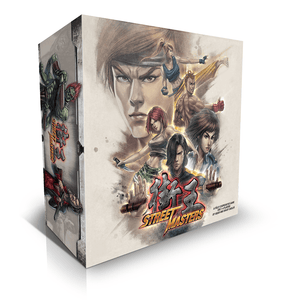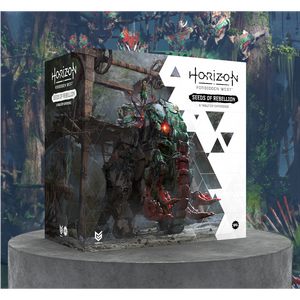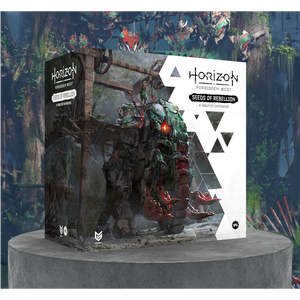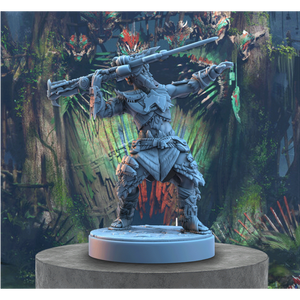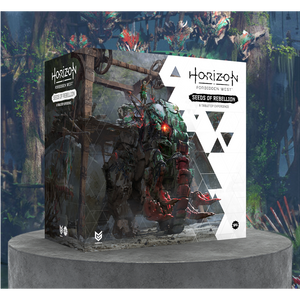If you’ve ever played an RPG, chances are you’ve encountered a ghoul.
They’re often characterised as gluttonous, flesh-eating humanoids with a habit of stealing and eating corpses from fresh graves.
Ghouls are common foes in The Witcher 3, crop up in the Fallout series as radiation-afflicted people, and enjoy great tabletop pedigree to boot, appearing in the original Dungeons & Dragons release way back in 1974.

But it didn’t start there – ghouls go back much, much further than that. In fact, it’s fair to say they’re one of the most enduring monster figures from human history.
So, in the fourth instalment of Creature Chronicles – my article series exploring the cultural roots of roleplaying monsters – it’s time to turn our attention to these ghastly graverobbers.
(And the excitement doesn’t stop here! If you want to add a dose of ghoulish glee to your next RPG session, check out Hive of the Ghoul-kin.)
Ghoulish Etymology
The etymological root of ‘ghoul’ is from the Arabic غُول (ghūl): a desert-dwelling, shapeshifting demon of sorts. This in turn is derived from غَالَ (ghāla), meaning ‘to seize’.
Right away, we can see the modern incarnation begin to take form. After all, ghouls in the RPG world are known for their tendency to seize and grasp: to steal humans back to their ghoulish lair to be devoured.
In our very own Hive of the Ghoul-kin adventure, the ghoul hive threatens both the living and the dead:
“Ghouls teem in the darkness, stealing up from their subterranean kingdom to filch corpses wherever they can find them. There’s not an undisturbed graveyard to be found on the continent.
Didn’t you ever wonder why so many dead are taken from their graves? True, it’s easier to pretend otherwise. But the thefts are getting more frequent, and more noticeable. And now, the living are being taken down into the hive.”
But that idea of ghouls spiriting folk away didn’t actually begin with Arabic folklore.
If we look again at the etymological roots, there’s a case to be made that غُول (ghūl) stems from the much earlier ‘gallu’ or ‘galla’ – demonic figures from Ancient Mesopotamian mythology.
It’s probably important to add a disclaimer here. I’m a copywriter, not an etymologist. I can’t say definitively that the two creatures are linked – I’ll leave that to the academics.
But there’s an irresistible similarity between gallu and RPG ghouls, so that’s where we’ll begin.
Ghouls in Ancient Mesopotamia
The gallu – our ancient proto-ghouls – were demons living in the Mesopotamian underworld. Again, the ghoulish tendency ‘to seize’ rears its head, as the gallu were known for dragging humans to this underworld, possibly to be devoured.
The primary record of these devilish creatures is in Inanna’s Descent to the Underworld*, an astonishingly ancient piece of literature that lays claim to being the world’s oldest epic poem.

*Note that in this translation, the word ‘demon’ is used instead of ‘gallu’ or ‘galla’
Historians believe Innana’s Descent to the Underworld was created around 4,000 years ago. That’s more than a thousand years before Homer penned The Iliad!
If we compare that to the literary history in my native British Isles, it really starts to get mind-blowing.
Innana’s Descent to the Underworld predates (arguably) the earliest recorded piece of ‘English’ literature, Cædmon's Hymn, by roughly 2,500 years. There’s a shorter time between Cædmon’s lifetime and the present day than there is between Cædmon and our unnamed Mesopotamian poet. That’s pretty wild.
So, it’s fair to say ghouls have had quite the journey to arrive on your tabletop!
Anyway, speaking of epic journeys, the poem’s story goes more or less as follows:
Inanna, the Mesopotamian goddess of beauty and love, ventures into the underworld to see her sister Ereshkigal, Queen of the Dead. But things don’t go quite as planned.
Upon her arrival in the underworld, Inanna is struck dead by the Anunnaki, judges of the underworld. Luckily for her, she’s duly resurrected and rescued from her hellish prison by Enki, the god of wisdom.
It’s in this netherworld that she meets the gallu, and their description in the poem is fascinating:
“[Gallu] know no food, know no drink, eat no flour offering and drink no libation. They accept no pleasant gifts. They never enjoy the pleasures of the marital embrace, never have any sweet children to kiss. They tear away the wife from a man's embrace. They snatch the son from a man's knee. They make the bride leave the house of her father-in-law. They crush no bitter garlic. They eat no fish, they eat no leeks. They, it was, who accompanied Inana.”
Now, there’s an obvious contrast between the gallu and ghouls here – gallu “know no food”, whereas ghouls are notorious for their appetite for flesh.
But there are similarities: both creatures are feared for stealing people away from their loved ones. The ghouls do it out of hunger; gallu do it in service to the Queen of the Dead. And that link to death and the underworld is persistent. Ghouls steal and eat the dead; gallu steal the living to join the world of the dead.
It’s very tempting to imagine Inanna’s tormentors laid the foundations for the ghouls we know and love today.
Anyway!
Ghouls are a well-known creature in RPGs, characterised as flesh-eating humanoids with a habit of stealing and eating corpses from fresh graves. The word "ghoul" comes from the Arabic "ghūl," which means "to seize." Ghouls are often associated with Middle Eastern mythology, but they can be traced back to Ancient Mesopotamian mythology, where they were known as "gallu" or "galla," demonic figures that lived in the underworld and dragged humans down to be devoured.
Ghouls have had quite a journey to arrive on tabletops, and they continue to fascinate and terrify players today.
Ghouls in Epic Encounters
Richard August, the mind behind Epic Encounters had this to say:
‘Ever since reading Pickman’s Model, by HP Lovecraft, I’ve loved - and been nauseated - by ghouls. Bringing them to Epic Encounters was an early wish, and I think we managed to provide a genuinely disquieting take on the eaters of the dead!’
Where can you find Ghouls in Epic Encounters?
Hive of the Ghoul-Kin!
Listen well, adventurers. It’s time to set the scene:
You may think the leagues of earth beneath your feet are still, with centuries of soil and stone heaped in the dark, but you’d be wrong. Didn’t you ever wonder why so many dead go missing from their graves? True, it’s easier to pretend otherwise. Easier than confronting the roiling mass of slavering ghouls that tunnel into crypts and catacombs, never satisfied. But you can’t pretend forever.

The thefts are getting more frequent, and more noticeable. And now, the living are being taken down into the hive. Of course, they’re not living when they get there. Or in one piece… Do you dare venture into a terrifying subterranean realm to confront the ghoul-kin?
Hive of the Ghoul-kin is a warband encounter that pits you against a horde of ravening ghouls.
It’s playable as a standalone battle but you can also use it as part of a wider campaign.
Glutton for punishment? Use it as the precursor for Barrow of the Corpse Crawler for a deliciously creepy adventure!
As with all our Epic Encounters sets, each box contains everything you need to run a 5e compatible roleplaying campaign.
Hive of the Ghoul-kin includes 15 highly detailed minis, a double-sided game mat, and an adventure book replete with everything needed to transfer your imagination to the tabletop.
And thanks to you, dear reader, for tuning (scrolling?) into another instalment of Creature Chronicles!
Until next time!

 Join us on Discord
Join us on Discord


